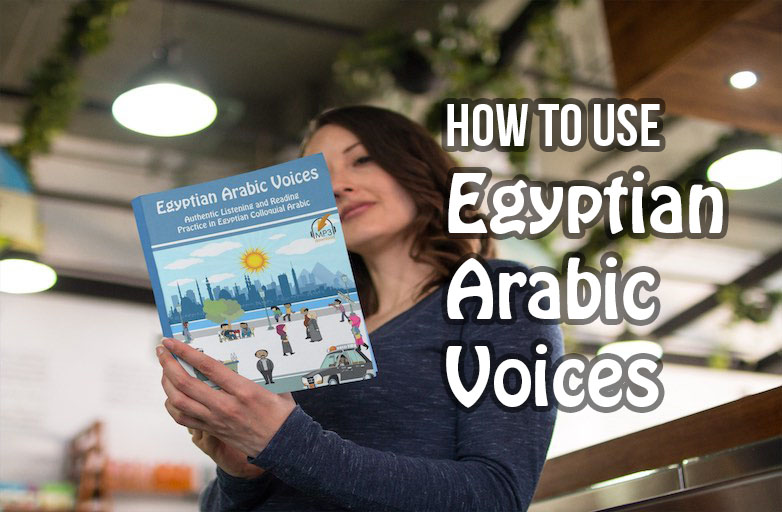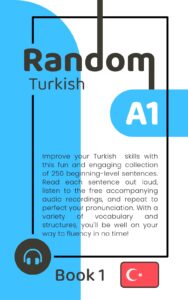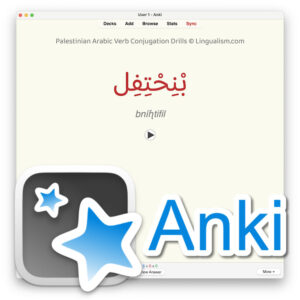To get the most out of Egyptian Arabic Voices, you need to exercise a bit of discipline—discipline to resist reading the texts and their translations before you have thoroughly studied the listenings. This cannot be emphasized enough. Once you have read the texts and translations, the dynamics of what you can obtain from listening to the segments changes fundamentally. You should first listen to the segment several times while working your way through the exercises in the book. These have been designed to help you first understand the gist and gradually discover details as you relisten. Only once you have come to understand as much as you can through the exercises should you move on to study the text and translation that follow. This approach will result in maximum efficiency in improving your listening skills. A step-by-step guideline follows.
STEP 1: CHOOSE A SEGMENT TO STUDY
The segments can be studied in any order. The MP3s that accompany Egyptian Arabic Voices are available as free downloads at www.lingualism.com/eav where you can also stream the audio directly.
STEP 2: TITLE AND KEYWORDS
Before you listen the first time, be sure to read the title of the segment and study the keywords. Going into a listening “blind”—without having any context, without even knowing the topic—makes listening comprehension in a foreign language extremely difficult. Just by knowing the general topic, we are able to improve the amount we can understand, as we are able to draw on knowledge from our past experiences, anticipate what might be said, recognize known words, and guess new words and phrases.
STEP 3: MAIN IDEA
Now, determine the “Main Idea” from among the four choices. If you are not fairly confident you know the main idea, listen one more time to narrow down your choices by a process of elimination. Once you are confident you have determined the main idea of the segment, check your answer. (Answers for the exercises are found at the end of each segment, below the lined note-taking section.) If you were incorrect, listen one more time with the main idea in mind.
STEP 4: TRUE OR FALSE
Answer the “True or False” questions. (Do not read ahead to the multiple-choice questions as some of these questions themselves may answer the true or false.) If you feel unsure of any of your answers, listen to the segment again before checking your answers. You will notice that a small number follows most of the answers in the answer key. These numbers correspond to the line number in the text and translation that reveals the answer. If you do not understand why you got an answer wrong, quickly look at the text and/or translation for that line number. (Here’s where you have to use your self-discipline not to read beyond the specified line number!) Listen again and place a check next to each true or false question as you hear the answer.
STEP 5: MULTIPLE CHOICE
Answer the “Multiple Choice” questions. Follow the same guidelines as for the true or false Note that both the true or false and multiple-choice questions are based on information found in the segment, according to the information provided by the speaker, regardless of the accuracy of the information. You can think of each question as being preceded by “According to the speaker ,…” or “ The speaker mentions that…”.
STEP 6: MATCHING
Match the Arabic words and phrases to their English translations. The vocabulary in this exercise focuses mostly on high-frequency adverbs, connectors, and phrases. Such words are frequently heard in the spoken language and are vital for connecting ideas to produce natural speech. Match the vocabulary items to their English translations. You will learn by spending time playing with the words, so don’t look up the answers too quickly. After you have matched the words and checked your answers, listen again while you check off the words as you hear them.
STEP 7: TEXT AND TRANSLATION
Now that you have worked your way through the exercises and have managed to pick up more of what has been said, you can feel free to move on to study the text and translation for the segment. This part is more free-style. Depending on your level of Arabic and level of comfort with the text, you can approach it in several ways. For instance, you can cover the Arabic side and first read the translation; then try to translate the English back into Arabic based on what you remember. Also, you can simply try to brainstorm some possible Arabic equivalents for the words or phrases in the English translation; then check the Arabic side and see how it was actually said. Conversely, you can cover the English side first and relisten while you read along with the Arabic, perhaps pausing the audio to repeat each line aloud. In any case, the side-by-side arrangement of the Arabic text and its English translation allows you to cover one side and test yourself in various ways. You should be able to match up most words and phrases with their equivalents in English. You may want to highlight useful and interesting vocabulary and phrases you want to learn.
STEP 8: VOCABULARY
This exercise focuses on content words—mostly nouns, verbs, and adjectives. The vocabulary that an intermediate learner already knows and that which he or she needs to learn will vary greatly from person to person. The exercise draws your attention to some interesting vocabulary items found in the text. You are encouraged to continue to discover more, useful vocabulary—both words and phrases—which you can write in the lined note-taking section.)
STEP 9: LISTEN AGAIN
Try listening again later to the segments you have already studied. You will find that you can understand more and with more ease the following day. (Studies have shown that material learned is consolidated and organized in the brain during sleep.)
The Texts and Translations
Lines
The text, phonemic transcription, and translation for each segment have been divided into numbered “lines”, which are not necessarily complete sentences or even clauses but are manageable chunks which can be studied.
Notes
Notes follow the texts and are referenced within the text by the * and (i) symbols next to the line numbers. The asterisk (*) refers to a linguistic note, while (i) indicates a cultural note and/or Internet link to a relevant article or video which you may find interesting. Formal forms and pronunciations borrowed from MSA will often be pointed out in the notes, marked with ↑ to show it is an “elevated,” formal style and contrasted with ↓, indicating it is the common, everyday equivalent.
Translations
Good style has at times been sacrificed in favor of direct translations so that Arabic words and phrases can easily be matched up to their translations. You are encouraged to think of alternative ways lines could be translated into English.
Fillers
Fillers, which are used to signal that the speaker is thinking of what to say next, are a common and natural part of spoken language. To avoid cluttering the text, uh… (…اااه) and um… (…اممم) are not written. Words that function as fillers are always written but are often left untranslated, as they do not add substantial meaning to the sentence. يَعْنى is the most common filler in Egyptian Arabic and could translate as that is or you know. You will notice other words which are “overused” by Egyptians, such as طبْعاً ʈáb3an (of course), بقَى báʔa (of course) بِصراحه bi‑ʂarāɧa (frankly), and مثلاً másalan (for example), and need not always be translated.
Another trait of spoken discourse is that the speaker may misspeak, then back up to correct himself or herself. Also, a speaker may decide to rephrase a sentence, or simply not finish it. These are all marked with ellipses (…) so that you can easily see that the word you didn’t catch is in fact not a complete word at all. These ellipses are meant to aid you in deciphering the listening. However, when you are reading for meaning, anything before an ellipsis can be ignored.
This article was adapted from the How to Use This Book section of the book Egyptian Arabic Voices.







